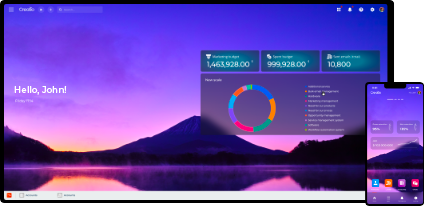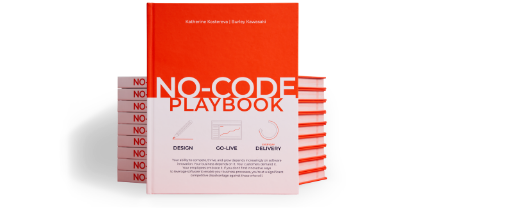Understanding SaaS CRM: Benefits, Features & Trusted Vendors

CRM has become a must-have for just about every business these days, no matter the industry or size. Today’s cloud-based SaaS CRMs offer automated workflows that help bring customer service, sales, and marketing teams into alignment – all while remaining simple to use through a subscription model.
This article covers the essentials of SaaS (cloud) CRM, breaks down its main benefits, and compares it to traditional in-house CRM systems. To help you make the right call, we’ll also look at how to choose the best-fit SaaS CRM and highlight top platforms built to improve customer engagement and support long-term business growth.
What is Software as a Service (SaaS)?
SaaS, or Software as a Service, is a software delivery model where applications are hosted and managed by an external provider. Rather than developing and maintaining custom-built systems, businesses simply subscribe to ready-to-use software and access over the Internet.
In the SaaS model, the SaaS provider takes care of the infrastructure, security, regular updates, and performance optimisation – freeing businesses up to focus on using the software, not maintaining it.
What is SaaS CRM?
SaaS CRM (Software as a Service Customer Relationship Management) is a cloud-based, ready-to-go software solution that helps businesses manage and strengthen customer relationships through a subscription model. It requires minimal setup and maintenance, giving teams quick access to core CRM features via the cloud – no complex implementation needed.
This usually covers contact and account management, tracking leads and opportunities, marketing optimisation, customer support functions, and much more.
Modern SaaS CRMs come packed with AI-powered features that enhance customer service, marketing and sales efforts. With AI on board, businesses can dig deeper into customer data, tailor interactions, and automate major parts of their day-to-day operations.
To support smooth CRM adoption and customisation, SaaS providers offer a range of onboarding resources, including training libraries, knowledge bases, and step-by-step guides. Most SaaS CRMs also integrate with third-party tools and widely used business apps, helping organisations streamline operations and centralise their data.

AI-Powered AI CRM
In-House CRM vs. SaaS CRM: What’s the Difference?
When exploring CRM software options, businesses often face a key choice: develop a custom in-house system or go with a SaaS-based CRM. The best fit comes down to you business’s goals, available resources, and how much control or customisation you need:
- An in-house CRM software is built and hosted on your own infrastructure and managed by internal IT teams. While this setup offers full control, it also demands a serious investment of time, technical expertise, and budget.
- A SaaS CRM runs on a subscription model. The vendor takes care of hosting, updates, security, and technical support – so your team can focus on getting value from the software, not maintaining it.
Here’s a quick comparison to help with your decision:
Key Differences Between SaaS and In-House CRMs
Aspect | SaaS CRM | In-house CRM |
| Initial Costs & Pricing | Low upfront investment; subscription-based pricing | High initial costs on solution development |
| Deployment | Hosted and maintained by the provider | Hosted on company-owned servers or private cloud |
| Setup Time | Ready to use within days or weeks | 6–18 months of development, testing, and rollout |
| Cost | Predictable monthly or annual subscription fees | High upfront costs (development, hardware, staffing) |
| Maintenance | Managed by the vendor (updates, security, performance) | Fully managed by internal teams |
| Customisation | Configurable with built-in apps and integrations; limited to vendor ecosystem | Highly customisable with full control over features and architecture, but requires in-house resources |
| Scalability | Easily scalable with vendor-managed infrastructure | Scaling requires infrastructure and development effort |
| Data Control | Data is stored with the provider; subject to vendor’s compliance standards | Full data ownership and on-premise control |
| Security | Vendor ensures compliance with industry standards (e.g., GDPR, SOC 2, ISO) | Fully managed internally; tailored to company-specific security requirements |
In-house CRM systems provide full control and extensive customisation, making them a solid option for organisations with highly complex workflows, strict data governance needs, or unique internal processes. These solutions are tailored to specific business requirements but demand significant IT resources, lengthy development timelines, and continuous internal maintenance.
For most businesses, SaaS CRM systems offer a more practical and forward-looking approach. They remove the burden of infrastructure management, reduce the load on internal IT teams, and deliver hassle-free updates and new features. With quicker deployment and a clear cost structure, SaaS CRM platforms support agility and keep the focus on business growth.
The top SaaS CRM solutions, like Creatio, take things a step further by combining no-code tools and AI features that let teams tailor their CRM workflows and user experience without needing to write a single line of code. These CRM platforms put the power in the hands of business users, delivering the flexibility of in-house systems with the speed, ease, and scalability of SaaS.
Main Benefits of Cloud-Based SaaS CRMs for Business
Businesses are turning to cloud-based CRMs to reduce reliance on IT, streamline deployment, and stay up to date without the hassle of heavy maintenance. These platforms offer cost efficiencies, quicker go-live timelines, built-in security, and ongoing innovation – helping businesses grow with ease and see faster ROI.
Below, we outline the key benefits of SaaS CRM platforms and explain why they’re the go-to for modern businesses.

Benefits of SaaS CRM
Faster Deployment
SaaS CRMs are ready to roll almost straight away, needing very little setup compared to in-house systems, which can take months to build and deploy. With cloud-based solutions, businesses can onboard teams quickly and start managing customer info without relying heavily on IT support. A cloud-based CRM can be up and running in days or weeks, while in-house setups usually involve lengthy development, testing, infrastructure setup, and ongoing maintenance.
Lower Initial Investment
Thanks to their subscription-based model, SaaS CRMs do away with the need for big upfront spends on software, servers, and IT staff – making them a more budget-friendly option for businesses wanting to make the most of their resources. In contrast, in-house CRM tools come with higher financial and technical requirements, turning them into a bigger long-term investment.
Reduced Maintenance Costs
SaaS providers take care of all updates, bug fixes, and security patches, cutting down on IT overhead. On the other hand, businesses running in-house CRM systems need to constantly invest in maintenance, troubleshooting, and system upgrades.
Automatic Updates & Maintenance
SaaS CRM vendors are responsible for developing and deploying the latest features, performance improvements, and workflow enhancements. These updates happen automatically, so internal IT teams don’t need to manually manage or implement changes. This makes it easy for businesses to stay up to date with industry trends, AI-driven tools, and best practices – without extra effort.
Built-in Security & Compliance
SaaS CRMs come equipped with enterprise-grade security, encryption, and compliance certifications straight out of the box, making it easier to protect data without additional effort. In contrast, businesses running in-house CRMs need to build and maintain their own security infrastructure, carry out audits, and keep up with evolving regulations.
Ongoing Vendor Support
SaaS CRM providers deliver ongoing customer support to help businesses resolve issues, fine-tune system performance, and access training materials. This external assistance reduces the load on internal IT teams and ensures quicker problem-solving and expert advice when needed. With in-house CRMs, all support must be handled internally.
Wider Integration Capabilities
CRM SaaS software usually generally provides a broader range of out-of-the-box integrations suited to different industries and business needs. Thanks to a smooth integration process, businesses can quickly link to their CRM with existing and new tools—like document management solutions, ERP systems, or customer support platforms—and realise value much faster than with in-house systems.
Faster Return on Investment (ROI)
SaaS CRMs offer a quicker ROI by lowering upfront expenses and speeding up implementation. With minimal setup time, businesses can get up and running straight away, resulting in faster adoption and improved efficiency.
7 Best SaaS CRM Solutions for Businesses
Creatio
Creatio CRM is a comprehensive, modern CRM suite covering marketing, sales, and service automation. Built on a unified no-code platform and backed by advanced AI capabilities, it offers a high level of customisation with a flexible, composable architecture. You can roll out it as a full bundle or choose standalone solutions tailored to your business needs.

Creatio’s SaaS CRM products give businesses a 360-degree view of their customers, helping unlock valuable insights and deliver more personalised experiences. With AI-native functionality and built-in collaboration tools, the platform supports smoother cross-team workflows, boosting efficiency and long-term growth.
Creatio’s Unified CRM Suite includes:
- Marketing Creatio – An AI-native marketing automation platform built to streamline lead management and drive revenue growth. It allows businesses to segment audiences, track website activity, personalise campaigns, and fine-tune performance with AI-powered analytics.
- Sales Creatio – An AI-powered sales automation platform that boosts sales performance through opportunity scoring, sales forecasting, contract management, and data-driven analytics.
- Service Creatio – A unified service management solution that enhances customer experience through AI-supported case management, problem resolution, sentiment analysis, and smooth team collaboration.
Creatio is a top pick for mid-sized to large businesses after a flexible, efficient, budget-friendly CRM with a unified structure. It’s been named a Leader and Strong Performer by key industry analysts like Gartner and Forrester – further proof of its capability and credibility.
Creatio key features:
- Prebuilt CRM and automation solutions for Marketing, Sales, and Service teams to boost operational efficiency
- Unlimited customisation and flexibility to tailor the platform to specific business needs
- AI-native features included in every base license, supporting smarter automation and decision-making
- Composable no-code architecture allowing easy scalability and streamlined process automation
- Transparent and straightforward pricing with no hidden charges
- Industry-specific CRM solutions for 20+ sectors, ensuring a strong fit across a range of industries
- Access to over 400 third-party add-ons and applications via the Creatio Marketplace
Creatio limitations:
- Creatio may come with a bit of a learning curve for those new to no-code development
Creatio pricing options:
Creatio’s offers a flexible, composable pricing model, meaning businesses only pay for what they use. The core platform includes three plans: Growth 40 AUD (~$25 USD), Enterprise - 88 AUD (~$55 USD) , and Unlimited - 135 AUD (~$85 USD) per user per month – with Predictive AI, Generative AI and Agentic AI features included at no extra cost. Each of the SaaS CRM products –Sales, Marketing, and Service – are available at 24 AUD (~$15 USD) per user per month, and can be purchased individually or bundled together as a complete suite.
To help businesses get a feel for its full capabilities, Creatio also offers a 14-day free trial, complete with customisation options to suit specific team requirements.
Creatio customer ratings:
Capterra: 4.7/5
Gartner: 4.9/5
G2: 4.7/5

Salesforce Sales Cloud
Salesforce Sales Cloud is a well-know CRM platform built to streamline sales operations by supporting lead tracking and workflow efficiency. It includes tools for managing sales, customer service, marketing, and commerce, with a strong focus on customisation. While AI-powered automation is available, it tends to be bundled into the higher-tier pricing plans.

By offering detailed insights into customer behaviour and lead engagement, the platform enables teams to fine-tune sales strategies and boost overall performance. Businesses can spot high-value prospects, personalise communication based on purchasing habits, and keep tabs on deal progress using visual dashboards. On top of that, Sales Cloud includes a broad range of workflow automation tools to cut down on repetitive tasks – like data entry and follow-ups – freeing up sales teams to concentrate on closing deals and building stronger customer relationships.
Salesforce key features:
- Audience segmentation and a full 360-degree customer view
- Sales dashboard to manage pipelines
- Lead management with tools to track customer retention
- Customisation and scalability available on demand
- Predictive and generative AI tools to boost CRM capability
Salesforce limitations:
- High implementation costs
- Steep learning curve
- Heavy reliance on professional developers
Salesforce pricing options:
Salesforce Sales Cloud’s enterprise plans start from 261 AUD (~$165 USD) per user per month. To access AI functionality, businesses need to opt for the Unlimited plans, priced at 523 AUD (~$330 USD) per user/month for predictive AI or 793 AUD (~$500 USD) per user/month for both Predictive AI and Generative AI.
Salesforce customer ratings:
Capterra: 4.4/5
Gartner: 4.5/5
G2: 4.4/5
See also: Salesforce Alternatives & Competitors
HubSpot
HubSpot CRM is a well-regarded option for businesses looking to manage customer interactions and data in one place. It covers a wide range of functions, including marketing, sales, customer service, website, and content management. Known for its ease of use and flexibility, HubSpot makes it simple for teams to access real-time data, create reports, and manage leads through a single platform. Its modular structure allows businesses to scale their CRM as they grow, making it a solid choice for expanding organisations.

HubSpot key features:
- Centralised CRM to manage the full customer experience
- Sales pipeline tools with deal tracking and forecasting
- Marketing automation tools for lead nurturing
- Customer support features, including help desk and ticketing
HubSpot CRM limitations:
- High subscription costs
- Fewer integrations compared to some competitors
- Best suited for large companies with more budget
- Access to premium features requires higher-tier plans
HubSpot pricing options:
Hubspot’s pricing is based on your business requirements, starting from 32 AUD (~$20 USD) per user per month for the Starter plan with core features, up to 6700 AUD (~$4.200 USD)per month for 7 users on the Enterprise Customer Platform. Additional seats are available from 71 AUD (~$45 USD) per month, depending on the chose plan.
HubSpot CRM’s customer ratings:
Capterra: 4.5/5
Gartner: 4.4/5
G2: 4.4/5
OnePageCRM
OnePageCRM is a cloud-based solution built to boost sales performance, especially for small to mid-sized businesses. Its main features include contact management, task prioritisation, and workflow automation – helping teams stay on track and get more done. With support for various integrations, the platform offers a clear-cut way to manage client interactions and navigate the sales pipeline efficiently.
While its user-friendly design makes it a breeze to get started, it offers limited customisation, which might not suit businesses with more complex needs. Still, for teams seeking a simple, action-focused CRM to streamline sales, OnePageCRM is a solid, easy-to-use option.

OnePageCRM key features:
- All-in-one contact management dashboards
- Advanced lead generation and lead capture functionalities
- Email marketing automation tools
- Pipeline and deal management
OnePageCRM limitations:
- Best suited for sales teams only
- No option to import deals, only contacts
- Limited integration functionality
OnePageCRM pricing options:
OnePageCRM’s pricing starts at 24 AUD (~$15 USD) per user per month on a month-to-month basis. The provider also offers a free 21-day trial so businesses can test its core features for sales process optimisation.
OnePageCRM customer ratings:
Capterra: 4.7/5
G2: 4.7/5
Microsoft Dynamics 365
Dynamics 365 is a cloud-based suite built for enterprises that need both Customer Relationship Management (CRM) and Enterprise Resource Planning (ERP) tools. It delivers a unified platform across five main modules: sales, marketing, customer service, field service, and project operations.
With Dynamics 365 CRM, businesses can easily track customer interactions and automate sales, marketing, and customer support workflows. The platform enables teams to monitor pipelines, personalise outreach, automate campaigns, and analyse user engagement. Its strong integration with Microsoft tools like Office 365, Teams, and Azure makes it easier for teams to collaborate, manage data effectively, and gain more detailed reporting insights.

Microsoft Dynamics 365 key features:
- Customisable Lead Qualification Process
- Advanced Routing and Case Management
- Finance & Supply Chain Management
- Email Engagement Heatmap Analytics
- Omnichannel Customer Service
Microsoft Dynamics 365 limitations:
- High implementation and subscription costs
- Very steep learning curve
- Customisation can be complex and often requires expert developers
Microsoft Dynamics 365 pricing options:
Pricing for Dynamics 365 starts at 103 AUD (~$65 USD) per user/month, though the final cost can vary depending on the features selected, user roles, and any additional customisation or integration requirements.
Microsoft Dynamics 365 customer ratings:
Capterra: 4.4/5
Gartner: 4.4/5
G2: 3.8/5
Zoho
Zoho CRM is a solid choice for small to mid-sized businesses after a flexible and easy-to-use CRM tool with moderate process management features. The platform offers a broad range of tools to help streamline sales, lift customer service, and strengthen marketing efforts.
Many users appreciate Zoho’s straightforward setup, which makes it easy to get started, boost workflows, and improve overall productivity. It’s commonly used for lead tracking, refining the sales process, and managing customer relationships – helping teams drive better retention and work together more effectively. While Zoho CRM does support extensive customisation, tailoring it to specific business needs might take a bit of time as teams get familiar with the platform.

Zoho key features:
- Easy-to-customise interface
- 360 Customer View
- Omni-channel communication
- AI-powered conversational assistant “Zia”
- Supports 20+ languages
Zoho limitations:
- Interface can be tricky to navigate
- Some features and customisations are complex to implement
- Paid training might be needed to get started
- Customer support can be slow to respond
Zoho pricing options:
Zoho CRM's pricing starts at 24 AUD (~$15 USD) for up to 3 users per month. Additional costs apply for features like data backups and extra file storage across all plans.
Zoho customer ratings:
Capterra: 4.3/5
Gartner: 4.4/5
G2: 4.1/5
Pipedrive
Pipedrive is a cloud-based customer relationship management platform built to help businesses boost their sales productivity. With a strong focus on efficiency, it automates follow-ups, analyses sales forecasts, and provides AI-driven insights to spot new opportunities. While Pipedrive does integrate with marketing and customer service tools, its main focus is the sales cycle, making it less flexible for broader workflows like marketing optimisation or customer support.
Pipedrive’s straightforward design and affordability make it a solid choice for small to medium-sized businesses with dedicated SaaS sales teams or well-defined sales processes. That said, organisations looking for a more all-in-one CRM to support collaboration across departments might find its capabilities a bit limited.

Pipedrive key features:
- Comprehensive sales team management
- End-to-end sales pipeline analysis
- Comprehensive contact management
- Lead tracking
Pipedrive limitations:
- Limited capabilities for marketing and services teams
- Lack of customisation for reporting and advanced data visualisations
- Limited AI-driven automation
Pipedrive pricing options:
Pipedrive CRM's pricing starts at 22 AUD (~$14 USD) per user per month, though the final cost can rise considerably depending on additional service packages.
Pipedrive customer ratings:
Capterra: 4.5/5
Gartner: 4.2/5
G2: 4.3/5
How to Choose the Right SaaS CRM Software
To ensure a smooth transition and get the most out of a SaaS CRM for your business, keep these five key factors in mind:
- Business Goals & Needs – Pinpoint your company’s main challenges and identify how a cloud-based CRM can assist. Common goals include managing sales pipelines, improving customer experience improvement,and automating marketing efforts.
- Essential Features – Focus on the features that are critical to your business. This might include customer 360 views, campaign management, sales productivity tools, forecasting, and contact or order management.
- Pricing – SaaS CRM pricing depending on features, scale, and complexity. Work out your budget and compare pricing models to choose the solution that meets your needs while keeping costs under control.
- Implementation & Ease of Use – Go for a platform that’s simple to set up and easy for your team to use. An intuitive CRM helps boost adoption, increase productivity, and reduce disruptions.
- Personalisation & Scalability – Choose a CRM that can be tailored to your business processes and grow with your business. A scalable solution lets you add new features, users, or integrations as your business expands.
From Reactive to Proactive: AI-driven Features of SaaS CRMs
In the coming years, AI is set to further transform CRM software. Right now, it already plays a key role in helping businesses streamline operations and strengthen customer relationships.
SaaS CRMs make it easy for companies to adopt cutting-edge AI features, saving time and resources while boosting customer satisfaction and driving business growth. AI-powered tools enhance a range of functions, including:
- Lead Scoring & Prioritisation: AI examines customer data and behaviour to rank leads, helping sales and marketing teams focus on high-value prospects.
- Personalised Customer Experience: AI-powered insights customise recommendations, emails and engagement tactics, lofing retention and loyalty.
- Automated Sales & Marketing: AI takes care of repetitive tasks like follow-ups, scheduling, and data entry, while chatbots keep leads engaged around the clock.
- Predictive Analytics & Forecasting: AI reviews sales trends and customer behaviour to suggest next best actions, turning insights into outcomes.
- Sentiment Analysis: With NLP, AI scans customer feedback and social media to help fine-tune products and services.
- Dynamic Pricing & Deal Optimisation: AI recommends pricing strategies and spots upsell opportunities based on how customers interact.
As CRM platforms continue to evolve, we’ll see even more AI use cases across different sectors. With SaaS-based CRMs, businesses in any industry can stay ahead of the game, accessing new AI features the moment vendors release them.
SaaS CRM in Action: The Next Step for Your Business
SaaS CRM software is a smart solution for businesses that need quick access to tools supporting customer service, marketing, and sales process automation. With easier setup, lower upfront costs, and a faster ROI, these platforms are a solid choice for many Australian enterprises.
While in-house CRMs offer control and flexibility, top-tier CRM SaaS now deliver similar benefits with modern no-code and AI-powered capabilities. This means businesses can use ready-made features and leading-edge tools, while still being able to shape the platform around their specific business needs.
Now’s the perfect time to unlock the full potential of SaaS CRM. Embrace a scalable, AI-native platform solution, like Creatio to streamline operations, support growth, and boost customer engagement – without the usual tech headaches.





